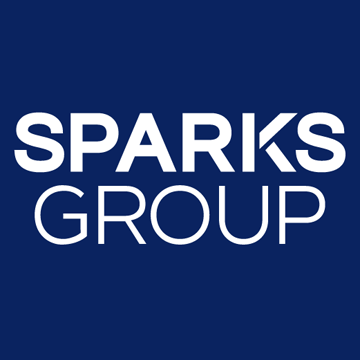
Recruiting new employees takes valuable time, money and effort. Once the offer of employment is accepted, HR must make onboarding their number one priority. Effective onboarding practices can lay the foundation for long term success of your employees and your company. According to the Society of Human Resource Management (SHRM), 25% of U.S. employees experience career transitions every year. Creating a robust, custom-tailored onboarding program is the key to establishing relationships, maintaining employee engagement and building unwavering loyalty.
Today’s most successful companies have formal onboarding programs that can last up to 12 months and include mentorships to guide the new employee through training and socialization. The U.S. Bureau of Labor Statistics released a study in August that states 36% of individual’s ages 35 to 44 years olds ended their job in less than a year, and 75% ended it in fewer than five years. These statistics correlate with both senior executives and hourly employee retention rates as well. SHRM reports that, “Half of all senior outside hires fail within 18 months in a new position, and half of all hourly workers leave new jobs within the first 120 days.” Since the cost of replacing an employee every year is significantly higher than the cost to internally develop an effective onboarding program, you cannot afford to ignore your onboarding process.
The main goal is to FULLY integrate the new employee into the company’s culture through a comprehensive process that starts well before the first day and involves everyone from top management to other employees. When developing your onboarding program be sure to gain support from all organizational resources and involve key stakeholders. Follow our five best onboarding practices to turnover and increase early productivity.
1. Pre-Boarding: Implement the Basic Paperwork, Set Up Technologies, and Prepare Work Spaces BEFORE the First Day!
Orientation is often confused with onboarding and includes signing/reviewing endless paperwork and completing other routine tasks. These are policy related issues that teach employees basic legal and policy-related rules and regulations. Try to send as much paperwork through email so the employee can review them before the first day, and then request for them to bring in any questions they may.
Computer, email, phone and other technologies specific to the job should be set up prior to the start date. Delaying these core functions directly impacts their productivity and engagement level. Also, remember to clear their designated work space. Just like you would prepare for a visiting guest, clean and make those first-class accommodations.
2. Make the First Day Special: First Impressions are Lasting Impressions!
Although your new employee has already formed their first impression of you and your company, you want to create a welcoming environment from EVERYONE! Formally announce your newest asset both internally and publically. Make your newcomer feel included by conducting a new hire celebration like an ice-breaking activity to introduce the team. Two unique first day ideas could be popping champagne at the ‘All Hands’ welcome lunch or giving a welcome gift based on the person’s preferences, which you can seek from social media. Be creative with their first day and have fun!
3. Clarify Expectations: Define the Company Culture and Set the Standard.
Take the time to personally sit down with your new hire and explain the history of your company and define the culture. If your company was founded over one driving principal you are passionate about, share this story to explain your cultural theme. Connecting with the new hire and having them understand your company history and heritage will be beneficial in the future as you work toward company goals together. SHRM reported that, “60 percent of managers who fail to onboard successfully cite failure to establish effective working relationships as a primary reason.”
Provide a company organizational chart that includes the roles and responsibilities of all employees. This will help the new employee hit the ground running faster as they seek support and resources to tackle specific tasks for their responsibilities.
Additionally, clearly review the specific job responsibilities of the new employee. Set your expectations and how you envision this person growing that position. This will instill your confidence in that person to be successful.
4. Provide a Mentor: Mentorships Create More Confident and Competent Employees.
When employees are matched properly both people have knowledge to share. This mentorship is a critical tool for training the new employee on all things from company socialization aspects to the company business tactics. For example, millennials and generation z are true digital natives, while baby boomers hold years of experience. The match will benefit both parties and introduce new opportunities for the company as ground breaking ideas are born from experience and new technology.
5. Develop an Onboarding Milestone Program: Reviewing Employee Progress Over the Course of a Year Will Allow you to Make Adjustments to Ensure they Both are Happy and Successful.
In SHRM’s report on Onboarding New Employees: Maximizing Success, they suggest developing a post-organizational entry plan that checks in with the employee every 30, 60, 90, and 120s days to talk about their progress. This provides support through two-way feedback, so coaching can be adjusted. This also allows for follow-up over the course of their entire first year, when change often occurs.
Now that the best practices have been defined, let’s review the poor employee onboarding practices that lead to those unfavorable retention statistics. Failing to prepare for your new employee will create a disrespectful first impression and present your company as unorganized and impersonal. Be careful not to dump your company information onto the person. Having an onboarding process that includes learning about your company through the eyes of top management and employees will jump start relationships.
The bottom line is when employees are properly given the resources, support and tools right from the start they will be able to successfully contribute to the company’s goals faster. When onboarding is done effectively you will see higher job satisfaction, lower turner, and higher performance levels.
Contact Sparks Group today to infuse your onboarding program with the secret behind every successful organization and their loyal workforce.






